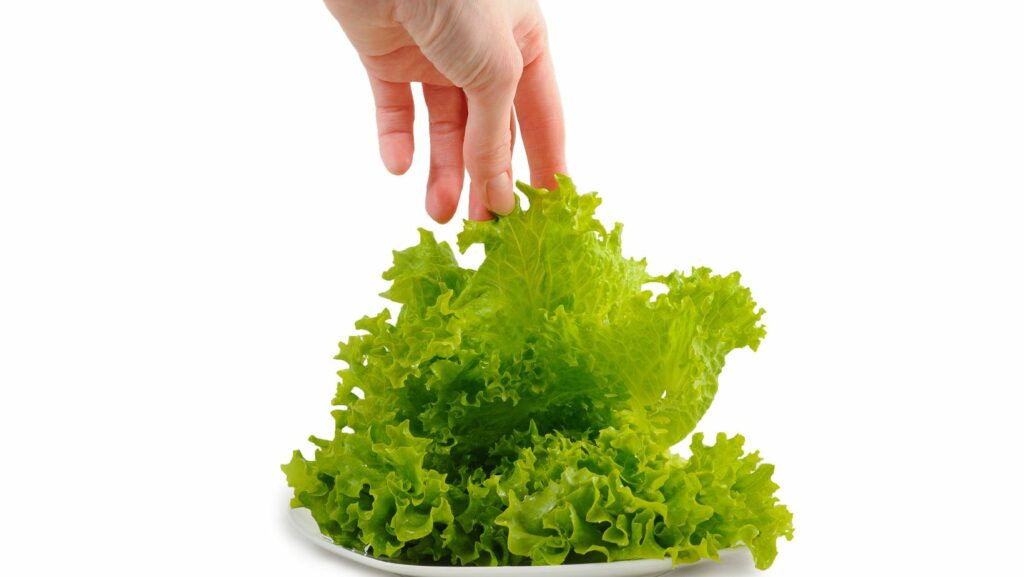Is it safe to eat lettuce that is turning red? This question often arises when we notice our once vibrant green lettuce leaves starting to change color. As an expert in nutrition, I am here to shed some light on the matter and provide you with the facts.
Table of Contents
ToggleFirstly, it’s important to understand that red or purple discoloration in lettuce is generally caused by a pigment called anthocyanin. While this change in color may be visually unappealing, it does not necessarily indicate spoilage or loss of nutritional Value. In fact, certain varieties of lettuce, such as red leaf lettuce or radicchio, naturally have reddish hues even when fresh.
From a health perspective, there are no significant concerns associated with consuming lettuce that is turning red. Anthocyanins are known for their antioxidant properties and have been linked to various health benefits, including reducing inflammation and supporting heart health. So, if your lettuce has started showing hints of redness but still looks crisp and smells fresh, feel free to enjoy it without worry.
Is It Okay to Eat Lettuce That is Turning Red
The Nutritional Profile of Lettuce
When it comes to health and wellness, incorporating lettuce into your diet can be a wise choice. This leafy green vegetable is not only low in calories but also packed with essential nutrients. Let’s take a closer look at the nutritional profile of lettuce:
- Vitamins and Minerals: Lettuce is an excellent source of vitamins A, C, and K. These vitamins play crucial roles in maintaining healthy vision, supporting immune function, and promoting proper blood clotting.
- Fiber: High in dietary fiber, lettuce helps keep your digestive system running smoothly by aiding in regular bowel movements and preventing constipation.
- Hydration: With its high water content, lettuce contributes to hydration while providing essential nutrients. Staying hydrated is vital for overall well-being and ensures proper bodily functions.
- Antioxidants: Lettuce contains antioxidants like beta-carotene and vitamin C that help combat oxidative stress caused by free radicals in the body. Antioxidants are known for their potential role in reducing the risk of chronic diseases.
How Lettuce Supports Digestive Health
A healthy digestive system is essential for nutrient absorption and overall well-being. Incorporating lettuce into your diet can contribute to good digestive health through various mechanisms:
- Fiber Content: As mentioned earlier, lettuce is rich in dietary fiber, which adds bulk to the stool and promotes regular bowel movements. This aids digestion while preventing issues such as constipation or diarrhea.
- Water Content: Lettuce has a high water content that helps hydrate the body as well as maintain optimal moisture levels within the digestive tract. This helps prevent dehydration-related digestion problems like dry stools or indigestion.
- Gut-Friendly Properties: Certain types of lettuce, such as romaine lettuce, contain prebiotic fibers that act as food for beneficial gut bacteria. These fibers help nourish the gut microbiota, contributing to a healthy balance of bacteria in the digestive system.

Is It Safe to Eat Red Lettuce?
Is Red Lettuce Safe to Consume?
When it comes to the safety of eating red lettuce, there are a few factors to consider. Generally, red lettuce is safe to consume as long as it hasn’t spoiled or become overly wilted. The change in color from green to red is actually a natural occurrence and not an indication of spoilage.
Red lettuce contains many of the same nutrients found in other lettuce varieties, such as vitamins A and K, folate, and fiber. In fact, some studies suggest that red leaf lettuce may have higher antioxidant activity compared to its green counterparts. So, if you enjoy the taste and texture of red lettuce, there’s no need to worry about its safety.
The Color Change in Lettuce: Is It a Cause for Concern?
The color change from green to red in lettuce occurs due to pigments called anthocyanins. These pigments give certain fruits and vegetables their vibrant colors and are associated with various health benefits. As the leaves mature, they accumulate more anthocyanins, resulting in a redder hue.
In conclusion (without using “in conclusion”), understanding the nature of red lettuce helps us appreciate its unique characteristics. With its captivating color, nutritional Value, and distinct taste, incorporating red lettuce into your culinary repertoire can add both aesthetic appeal and health benefits to your meals. Just remember to choose fresh leaves and discard any that show signs of spoilage.











